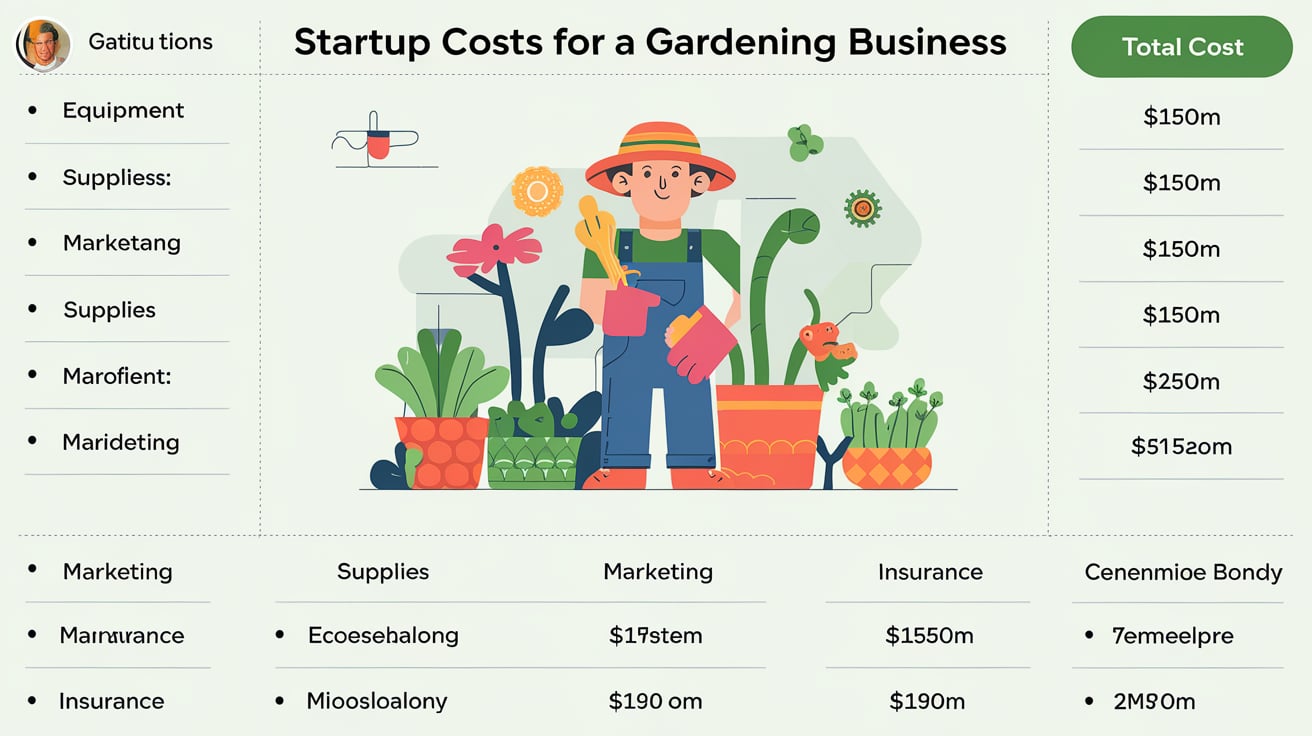When it comes to building a successful business, identifying and understanding your target audience is crucial. It’s like trying to hit a bullseye in the dark without knowing where the target is. This is where market research swoops in as the superhero we never knew we needed. Market research allows us to uncover valuable insights into who our potential customers are, what they want, and how we can effectively reach them.
Gone are the days of blindly throwing our products or services out into the world and hoping for the best. In today’s competitive landscape, precision is key. We need to know exactly who our ideal customers are if we want any chance of connecting with them on a deeper level. Market research provides us with the tools to make informed decisions based on data-driven insights rather than just relying on gut feelings or assumptions.
By conducting thorough market research, we gain a better understanding of not only who our target audience is but also what makes them tick. We can delve into their preferences, needs, pain points, and desires – information that enables us to tailor our messaging, offerings, and overall marketing strategies specifically toward them.
Market research helps transform vague notions about potential customers into crystal clear profiles that drive targeted marketing campaigns and ultimately boost business success. So buckle up as I take you through how this superhero called market research can illuminate your path towards reaching your target audience effortlessly!
How market research help in determining a target audience
- Explanation of what a target audience is.
So, you may be wondering what exactly is a target audience? Well, let me break it down for you. A target audience is a specific group of people that a company or organization aims to reach with their products or services. These individuals share common characteristics such as demographics, interests, behaviors, and needs.
Understanding your target audience is vital because it allows you to tailor your marketing strategies to appeal directly to the people who are most likely to become your customers. It’s like having a compass that guides you in the right direction.
Without knowing who your target audience is, your message can easily get lost in the sea of noise out there. By identifying and understanding this group of people, you can create targeted and impactful campaigns that resonate with them on a deeper level.
Nowadays, with competition more fierce than ever before, simply advertising blindly won’t cut it anymore. Your potential customers have infinite options at their fingertips and limited attention spans. That’s why pinpointing your target audience becomes increasingly crucial. By doing so, you can make sure that every dollar invested in marketing is maximized by reaching those individuals who are most likely to convert into loyal customers.
- Importance of identifying a target audience.
In my experience as a marketer, identifying a target audience is not just important but crucial for the success of any business. Knowing who your ideal customers are allows you to tailor your marketing efforts specifically to their needs and wants, resulting in higher conversion rates and customer loyalty.
By understanding your target audience, you can gain valuable insights into their demographics, interests, and behaviors. This knowledge helps you craft personalized messages that resonate with them on a deeper level. It’s like speaking directly to each individual customer instead of trying to appeal to a wide range of people who may or may not be interested in what you have to offer.

Additionally, identifying a target audience helps businesses make informed decisions about product development and innovation. When you know who your customers are and what they need or desire, you can create products or services that cater precisely to those desires. This focus on meeting customer needs increases the likelihood of repeat purchases and positive word-of-mouth referrals, which ultimately leads to long-term business growth.
II. Benefits of Identifying a Target Audience.
Identifying a target audience can be the key to unlocking the success of any marketing campaign. By understanding exactly who your ideal customers are, you can tailor your messaging and strategies to meet their specific needs and preferences. Market research plays an instrumental role in this process, as it allows you to gain deep insights into your target audience’s demographics, psychographics, and behaviors.
One major benefit of identifying a target audience is that it saves time and resources. Instead of wasting valuable marketing efforts on a broad spectrum of people who may not be interested in your product or service, you can focus on reaching those who are most likely to convert into paying customers. By doing so, you ensure that every dollar spent on advertising or promotional activities is put to good use.
Another advantage of targeting a specific audience is the ability to build stronger connections with potential customers. When you understand your audience’s needs, values, and pain points through market research, you can craft messages that resonate with them on a deeper level. This personalization can foster loyalty and trust among consumers, leading to higher customer satisfaction rates and increasing the chances of repeat business.
identifying a target audience through market research is essential for any successful marketing campaign. It allows businesses to save time and resources by focusing their efforts on individuals who are more likely to convert into loyal customers. Moreover, understanding your target audience enables personalized messaging that resonates with consumers, building stronger connections that translate into long-term partnerships.
- More effective marketing campaigns.
I’ve always believed that the key to running more effective marketing campaigns lies in truly understanding your target audience. Sure, you can have the best copywriting and design skills in the world, but if you’re not speaking directly to the needs and desires of your ideal customers, all those efforts will fall flat.
Market research is crucial because it helps us dive deep into the minds and hearts of our potential customers. It allows us to uncover their pain points, preferences, and motivations, so we can craft messaging that resonates with them on a profound level.
But here’s where many businesses go wrong: they stop at demographic information. They assume that knowing things like age range or income bracket is enough to create an effective campaign. But let me tell you this – demographics only scratch the surface.
We need to go beyond these basic markers and explore psychographics – what makes our audience tick? What are their values? What do they care about? Only by truly understanding our audience on this level can we create campaigns that speak directly to who they are as individuals.
One technique I find particularly useful in market research is conducting customer interviews or surveys. This allows us to have direct conversations with our target audience, where we can ask questions specific to their behaviors and preferences. By listening carefully to their responses, we gain deep insights into their mindset and can tailor our marketing strategies accordingly.
- Better understanding of customer needs.
As a marketer, I have come to understand that success lies in our ability to truly grasp the needs of our customers. But what does it mean to understand customer needs? It’s not simply about knowing their basic demographics or preferences; it’s about diving deep into their desires, dreams, and pain points. It’s about really getting inside their heads and hearts.
To better understand customer needs, we need to view them as individuals rather than just data points in a research report. We need to empathize with their struggles and challenges and ask ourselves how we can alleviate their pain.

This means going beyond traditional market research methods and actually interacting with our customers on a personal level. Listening attentively, observing behavior, and asking thoughtful questions are all essential tools for gaining a true understanding of what makes our customers tick.
But understanding customer needs isn’t just a one-time endeavor; it requires ongoing effort and adaptability. The world is constantly changing, and so too are the needs of our customers. As marketers, we must be flexible enough to evolve with them. This means staying up-to-date on industry trends, technology advancements, and societal shifts that may impact the way our target audience thinks and behaves.
By truly understanding the needs of our customers, we can create products or services that resonate deeply with them – ones that they didn’t even know they needed until they see it. This kind of connection goes beyond mere transactions; it builds lasting relationships based on trust and mutual understanding.
- Increased customer loyalty.
Increased customer loyalty is the holy grail of any business. It not only means repeat business, but also brand advocacy and word-of-mouth referrals. As a business owner, I have come to realize that building customer loyalty requires more than just offering quality products or services. It’s about creating an emotional connection with your customers, understanding their needs and preferences, and going above and beyond to exceed their expectations.
One way market research helps in determining a target audience is by providing valuable insights into consumer behavior and preferences. With the help of surveys, focus groups, or analytics tools, businesses can gather data on what motivates their customers to stay loyal. This information can then be used to tailor marketing strategies that speak directly to their target audience’s desires and pain points.
Moreover, market research enables businesses to identify gaps in the market or areas where competitors are falling short. By addressing these gaps and offering unique solutions or experiences, companies can differentiate themselves from the competition and create a sense of exclusivity that fosters customer loyalty.
understanding your target audience through market research is crucial for increasing customer loyalty. By tapping into consumer insights and leveraging them effectively in your marketing efforts, you can not only meet but exceed your customers’ expectations – ultimately driving customer satisfaction and building long-term relationships with your brand.
III. How to Identify a Target Audience.
When it comes to identifying a target audience, market research becomes an invaluable tool. It is not enough anymore to assume who your audience might be based on general demographics or personal preferences. Market research allows you to delve deep into the psyche of your potential customers and understand their needs, desires, and pain points.
One way market research helps in determining a target audience is by providing valuable insights into consumer behavior. By analyzing data such as purchasing habits, online browsing patterns, and social media interactions, you can uncover hidden trends and preferences that will help narrow down your target audience. This information can then be used to tailor your marketing messages and strategies specifically to resonate with this group.
Another benefit of market research in identifying a target audience is that it allows you to accurately define customer personas. Personas are fictional representations of your ideal customers based on real data collected from market research. They capture the key characteristics and traits of your target audience, enabling you to create more personalized content and experiences that speak directly to them.
In conclusion, market research plays a vital role in determining a target audience by providing insights into consumer behavior and allowing for the creation of accurate customer personas. It eliminates guesswork and ensures that your marketing efforts are focused on reaching the right people with the right message at the right time. So don’t underestimate the power of market research; embrace it as a crucial step towards achieving success in today’s competitive business landscape.
- Conducting market research.
As someone who is passionate about understanding consumer behavior and identifying target audiences, conducting market research is a non-negotiable step in my business strategy. Market research serves as the backbone of any successful marketing campaign, providing crucial insights into consumer preferences, demographics, and buying habits. Without this valuable information, all efforts to connect with a target audience would be nothing more than shots in the dark.
Moreover, market research allows me to gain an edge over competitors by uncovering untapped niches and emerging trends. By digging deep into customer needs and desires through surveys, focus groups, and online analytics tools, I can tailor my products or services to meet those demands precisely.

Understanding my target audience on a more intimate level enables me to speak directly to their pain points and position myself as the solution they have been searching for.
In addition, market research helps me identify potential roadblocks or obstacles on the journey toward capturing my target audience’s attention. It gives me the ability to anticipate competitors’ moves or detect any gaps in the market that I can exploit. By being proactive rather than reactive with this invaluable knowledge at hand, I am able to stay one step ahead of the game and ensure continued success in reaching my intended audience.
- Analyzing customer data.
Analyzing customer data is like digging for treasure in a digital goldmine. As a market researcher, I can’t stress enough the importance of this process in determining a target audience. It’s not just about collecting data; it’s about decoding the patterns and trends hidden within.
Every customer leaves behind breadcrumbs of information through their purchases, online behavior, and social media interactions. By analyzing this data, we gain valuable insights into their preferences, motivations, and desires.
But let me tell you something – analyzing customer data is no easy task. It requires an astute eye for detail and a curious mind that can connect the dots. In my experience, it’s essential to look beyond the obvious and dive deeper into the underlying meaning behind the numbers.
For example, by segmenting our customers based on age or location alone, we might miss out on some crucial factors that truly define them as individuals. The trick is to combine quantitative analysis with qualitative research methods to achieve a holistic understanding of our target audience.
Once we have unraveled the mysteries hidden within customer data, it becomes easier to tailor marketing campaigns that hit the bullseye. Armed with these insights, we can create personalized messages that resonate with our target audience on a deeper level than ever before.
And hey, when customers feel understood and valued by a brand? Well then my friend, they become loyal advocates who will not only keep coming back but also spread positive word-of-mouth like wildfire.
- Creating buyer personas.
Creating buyer personas is a crucial step in understanding and connecting with your target audience. It goes beyond just demographic information and delves into the mindset, behaviors, and motivations of your customers. By creating detailed buyer personas, you can tailor your marketing efforts to resonate with their specific needs and preferences.
One key aspect to remember when creating buyer personas is to avoid making assumptions based on limited data or personal bias. Take the time to conduct thorough market research, gather insights from real customers, and analyze trends in the industry. This will help you paint an accurate picture of who your target audience truly is.
Another important factor to consider when building buyer personas is the customer journey. Understanding how potential customers move through each stage of the buying process can help you identify pain points, opportunities for engagement, and ways to provide value at every touchpoint.
By taking the time to create well-rounded buyer personas, you can gain a deeper understanding of your target audience’s wants and needs. This knowledge will not only inform your marketing strategy but also enable you to build meaningful connections with your customers. It’s an investment that guarantees better results and long-term success in reaching and engaging with your ideal buyers.
IV. Common Data Analysis Techniques.
When it comes to determining a target audience, market research plays a crucial role. But once you’ve gathered all the data, how do you make sense of it all? This is where data analysis techniques come into play. These techniques help us uncover patterns and insights that can guide our marketing strategies.
One common technique is segmentation analysis. By dividing our target audience into distinct segments based on various characteristics such as demographics, interests, or behaviors, we can tailor our marketing efforts more effectively. For example, if we find that a certain segment prefers vegetarian options in the food industry, we can create targeted campaigns catering specifically to their needs.
Another powerful technique is regression analysis. This allows us to understand how different variables relate to each other and to our target audience’s behavior or preferences. By analyzing the relationship between factors like age, income level, and purchasing decisions, we can identify which variables have the most significant impact on our audience’s behaviors and focus on those areas when developing marketing strategies.
market research helps in determining a target audience by providing valuable insights through data analysis techniques like segmentation and regression analysis. By leveraging these techniques effectively, we can better understand our audience’s needs and tailor our marketing efforts accordingly, resulting in more successful outcomes for both businesses and consumers alike.
So next time you’re embarking on a market research journey, remember the power of data analysis that lies within these common techniques – they could be your key to unlocking undiscovered opportunities!
- Demographic analysis.
One of the most crucial aspects of market research is conducting a demographic analysis. This process involves thoroughly examining the characteristics and statistical data of a specific target audience. By doing so, businesses can gain valuable insights into their potential customers’ age, gender, ethnicity, income level, and more.
Demographic analysis offers a deeper understanding of who your customers are and what drives their purchasing decisions. It allows you to tap into the psychology behind consumer behavior and tailor your marketing strategies accordingly.
For example, if your target audience primarily comprises young adults with disposable income, you may want to focus on social media advertising or influencer partnerships to reach them effectively. On the other hand, if your product caters to middle-aged individuals looking for convenience and quality, investing in TV commercials or direct mail campaigns might be more effective.
Additionally, demographic analysis helps identify emerging trends or shifts in consumer preferences that can greatly impact your business’s success. By keeping an eye on changing demographics within your target audience over time, you will be better equipped to adapt and stay ahead of the competition. Furthermore, it enables you to uncover untapped markets or niches that may provide new growth opportunities for your business.
a robust demographic analysis lays the foundation for successful marketing strategies by enabling businesses to understand who their customers are and how best to engage with them.It allows us to make informed decisions about our products positioning,tailoring our messaging,and choosing appropriate distribution channels-which are all vital components of reaching out successfully to our targeted audience
- Psychographic analysis.
I’ve always been fascinated by the power of psychology in understanding human behavior. And when it comes to market research, psychographic analysis is a game-changer. Unlike demographic data that focuses on basic information like age and gender, psychographic analysis dives deep into the attitudes, beliefs, and values of your target audience. It goes beyond just knowing who your customers are – it helps you understand why they do what they do.
One of the biggest advantages of psychographic analysis is its ability to uncover hidden motivations and desires. By examining factors like personality traits, lifestyle choices, and interests, you can gain a deeper understanding of what makes your target audience tick.
This knowledge allows you to tailor your marketing messages and strategies in a way that truly resonates with them. Psychographic analysis can help you identify not only what products or services your audience is interested in but also why they are interested in them.
Another interesting aspect of psychographic analysis is its potential for identifying niche markets within larger target audiences. By exploring the unique preferences and behaviors of different segments within your overall customer base, you can uncover new opportunities for growth. Understanding these smaller niches allows you to refine your marketing efforts even further, ensuring that each segment feels seen and understood by your brand.
- Behavioral analysis.
Behavioral analysis is a powerful tool that market researchers use to understand the motivations and preferences of their target audience. By analyzing consumer behavior, we can uncover valuable insights that help us tailor our marketing strategies to better resonate with our customers. It’s all about observing patterns, identifying trends, and deciphering the underlying reasons behind why people make the choices they do.
One aspect of behavioral analysis that fascinates me is the concept of social proof. People naturally look to others for validation and reassurance when making decisions. By understanding how social influence affects consumer behavior, we can leverage this knowledge to build trust and credibility in our branding efforts. Whether it’s through testimonials, user reviews, or influencer partnerships, tapping into the power of social proof can greatly enhance our marketing campaigns.
Another intriguing aspect of behavioral analysis is the study of emotional triggers and decision-making processes. Oftentimes, consumers are driven by their emotions rather than logical reasoning when making purchasing decisions.
Understanding which emotions drive your target audience and aligning your messaging accordingly can be game-changing in shaping their perception and driving them towards action. By evoking certain emotions at different stages of the customer journey, marketers have a unique opportunity to create lasting connections with their audience.
V. Examples of Target Audience Identification.
One of the key aspects of conducting market research is identifying the target audience. Without a clear understanding of who your customers are, it becomes challenging to tailor your marketing efforts effectively. In order to facilitate this process, market research provides various tools and techniques that help in pinpointing the target audience more accurately.
Firstly, through customer segmentation, market research allows businesses to divide their potential customers into different groups based on shared characteristics such as demographics, psychographics, or behavioral patterns. This method enables companies to create targeted messaging and advertisements that resonate with specific segments and increase the likelihood of conversions.

Secondly, by utilizing data analysis software and tools offered by market research firms, businesses can gain valuable insights into consumer preferences and behavior. This information equips marketers with an understanding of what motivates their customers’ purchasing decisions and helps tailor products or services accordingly.
Furthermore, social listening is another effective method employed by market researchers to identify the target audience. By monitoring conversations on social media platforms related to relevant industries or products, companies can gain an understanding of consumers’ likes, dislikes, concerns, and aspirations. This data aids in identifying potential clients who align with their brand values and have a genuine interest in what they offer.
- BMW’s target audience.
As a car enthusiast, I have always been fascinated by BMW’s target audience. In my opinion, the brand has managed to cultivate a loyal following of individuals who value performance, luxury, and sophistication. It is no surprise that BMW is often associated with successful professionals who appreciate the finer things in life.
One interesting aspect of BMW’s target audience is their preference for high-tech features and innovations. Whether it be advanced driver-assistance systems or state-of-the-art infotainment systems, these tech-savvy individuals crave the latest advancements in automotive technology. They see their cars as an extension of their lifestyle and expect nothing less than cutting-edge features to enhance their driving experience.
Furthermore, BMW’s target audience is not limited to a specific age group but rather spans across generations. From millennials seeking style and status to baby boomers indulging in mid-life luxury, BMW manages to cater to various demographics through its diverse vehicle lineup. This adaptability allows the brand to maintain a strong market presence while constantly evolving to meet the ever-changing demands of its discerning customers.
BMW’s target audience encompasses affluent individuals who prioritize performance, luxury, and technological advancements in their vehicles. By understanding and effectively catering to this demographic through extensive market research, BMW continues to carve its niche as one of the leading luxury automotive brands worldwide.
- Zendesk’s customer experience trends report.
As someone who values customer experience, I was thrilled to dig into Zendesk’s latest customer experience trends report. It provided a fascinating glimpse into the ever-evolving world of customer service and highlighted some key trends that businesses should be mindful of.
One notable trend is the rising importance of self-service options. According to the report, 67% of customers would prefer to find answers on their own rather than contacting support. This highlights a clear shift in consumer behavior – people want quick and convenient solutions at their fingertips.
Another interesting finding from the report is the increasing expectation for personalized experiences. In today’s digital age, customers expect businesses to know exactly who they are and what they need. A staggering 72% of consumers reported that they expect companies to personalize interactions based on their preferences and past behaviors. This means that generic communication simply won’t cut it anymore – personalization is key to standing out in a crowded marketplace.
Additionally, Zendesk’s report emphasized the power of social media in shaping customer experiences. With over half of respondents stating that they have used social media for support purposes, it’s clear that platforms like Facebook and Twitter have become vital channels for engagement between customers and brands. Businesses must actively monitor these platforms and provide timely responses to both positive feedback and negative complaints.
VI. Conclusion.
In conclusion, market research is an essential tool for businesses to determine their target audience. It goes beyond guesswork and assumptions, providing valuable insights that help companies tailor their products and marketing strategies to meet the demands of their customers. Through market research, businesses can understand the demographics, interests, behaviors, and preferences of their potential buyers.
Furthermore, market research allows businesses to identify trends and anticipate changes in consumer behavior. This proactive approach helps brands stay ahead of the competition and maintain relevance in a fast-paced marketplace. By constantly analyzing data and staying informed about their target audience’s needs and desires, companies can develop innovative solutions that capture attention and drive sales.
Overall, market research empowers businesses to make informed decisions based on concrete data rather than relying on intuition or personal opinions. It helps companies narrow down their focus by identifying who exactly they should be targeting with their products or services.
Without understanding who your customers are and what they want, it becomes nearly impossible to effectively communicate your value proposition or build lasting relationships with them. Market research acts as a compass, guiding businesses towards success by placing customers at the heart of every strategic decision made.
- Recap of the importance of identifying a target audience.
Identifying a target audience is a crucial step in any marketing strategy. Without knowing who your ideal customers are, it becomes nearly impossible to create effective advertising campaigns or develop products that will resonate with them. In today’s crowded marketplace, understanding your target audience sets you apart from the competition and helps build long-lasting customer relationships.
One of the key benefits of identifying a target audience is being able to tailor your messaging specifically to their needs and interests. By speaking directly to their pain points, desires, and aspirations, you can capture their attention and make them feel understood. This personalized approach not only increases the likelihood of conversion but also creates a sense of loyalty as customers recognize that you genuinely care about addressing their unique challenges.
Moreover, defining your target audience allows you to allocate your resources more effectively. Instead of trying to reach everyone, which can be costly and ineffective, you focus on targeting those individuals who are most likely to be interested in what you have to offer. This allows for more efficient marketing campaigns that yielda better returns on investment.
identifying a target audience is the foundation of successful marketing efforts. It enables you to craft messages that resonate with potential customers’ needs and desires while maximizing efficiency by concentrating resources where they are most likely to have an impact. Embracing the power of market research allows businesses to stay ahead in today’s competitive landscape by understanding their audiences on a deeper level and building stronger connections with them.
- Final thoughts on the benefits of market research.
After diving deep into the world of market research, I can confidently say that it is a game-changer for any business looking to determine their target audience. Not only does it provide valuable insights into consumer preferences and behavior, but market research also allows businesses to optimize their marketing strategies and make informed decisions.
One major benefit that cannot be overlooked is the ability to identify untapped opportunities. Through thorough market research, businesses can uncover niche markets or emerging trends that may have been otherwise overlooked. This gives them the advantage of staying ahead of competitors and capitalizing on new opportunities in the marketplace.
Another standout advantage is the increased customer satisfaction that results from understanding your target audience better. Armed with valuable data from market research, businesses can customize their products or services to meet customer demands. By addressing pain points, providing relevant solutions, and delivering what customers desire most, companies can forge stronger connections with their audience and foster long-term loyalty.
Market research is not just a tool for big corporations; it’s a fundamental component for all businesses striving to connect with their target audience effectively. It provides invaluable information, reveals untapped potential, and ultimately leads to informed decision-making that translates into growth and success.You should read another article i wrote about >>>> How to prioritize tasks when creating an online business strategy to learn more.
As an author writing and creating business courses and articles, I am responsible for developing and delivering high-quality content that is informative, engaging, and relevant to the target audience.
I monitor and analyzes business trends and topics to create courses and articles that provide value to readers and students here. I am responsible for ensuring that all content is accurate, well-written, and met the needs of the target audience.






